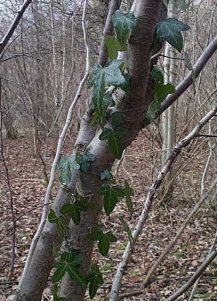|
Yule Log
Traditionally, the Yule
log (from an Oak tree) was cut down and decorated with
evergreens and sometimes sprinkled with grain or cider before
being set alight.
It was kept burning for at least twelve hours, and sometimes as
long as twelve days. When the fire died down, a small fragment
of the Yule log was kept and used to light the next years log.
Evergreen plants
Plants and trees which remain green all year round were of great
importance to ancient peoples. They symbolised enduring
life-force at a time when all other plants had shed their leaves
for the Winter. In the battle of light and life against the
darkness and death of Winter, the evergreens appeared to be one
step ahead.
Holly
Holly is a symbol of protection and the Druids of Old England
brought it into their houses as a home for the nature spirits
during the harsh Winter
Traditionally, Holly should be gathered for magickal uses on the
eve of the Winter Solstice, at midnight and without a light. In
return, an offering of red wine or your own blood should be left
in return for what you have taken.
Ivy
Ivy is a symbol of life and rebirth and is seen as a female
plant - balancing the male Holly. During the Winter, Druids used
Ivy as a decoration as it represented the immortality of the
spirit and became a home for the nature spirits.
Mistletoe
Mistletoe is a parasitic plant growing on the branches of trees.
It is usually found on Apple trees, sometimes on Hawthorn or Ash
but very rarely on the Oak.
The name, Mistletoe, is thought to be derived from the
Anglo-Saxon word of "mistletan" - "mistl" meaning "different"
and "tan" meaning "twig". This may be because the twigs of the
Mistletoe are different to the twigs of the host tree.
It is also a sacred herb of the Druids, who named it "druad-lus"
meaning "the Druid's plant". It was considered especially sacred
if it grew on the Oak tree (see the photograph, right, for an
example).
Mistletoe berries represented the semen of the Oak and were used
to strengthen the Sun which was so weak at this time of the
year. As they were seen to represent semen, the berries are an
obvious symbol of fertility and even today we traditionally kiss
under Mistletoe at Christmas/Yule. |
 |